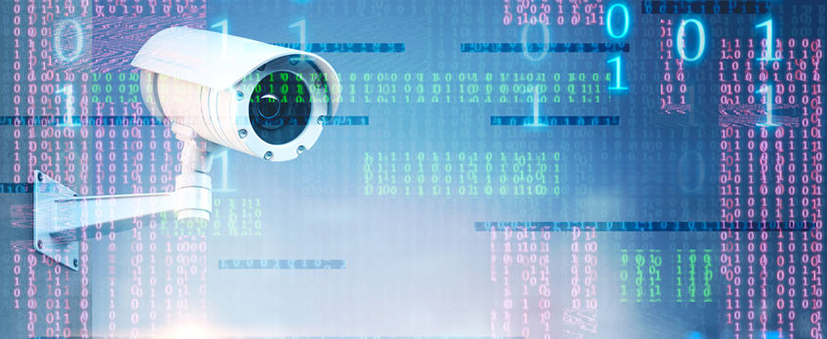Career 15 Vacancies 250+ Employees
Career 15 Vacancies 250+ Employees
InfoGuard AG (Headquarter)
Lindenstrasse 10
6340 Baar
Switzerland
InfoGuard AG
Stauffacherstrasse 141
3014 Bern
Switzerland
InfoGuard Com-Sys GmbH
Frankfurter Straße 233
63263 Neu-Isenburg
Germany
InfoGuard Deutschland GmbH
Landsberger Straße 302
80687 Munich
Germany
InfoGuard Com-Sys GmbH
Am Gierath 20A
40885 Ratingen
Germany
Cyber Risk Monitoring – why you should be monitoring your cyber risks

For SMEs, cyber risks are becoming increasingly business-critical. They represent an ever-present threat and impact all the parties involved – the company itself, its customers and partners. This is why cyber risk management and the self-monitoring that goes with it are important aspects of the overall security set-up of a company, and for a company as a trusted partner. In this blog post, you will learn why this is the case.
To ensure that work is done as efficiently as possible, activities are being outsourced more, so increasing dependence on third parties. This has resulted in supply chain management gaining importance in recent years, especially in terms of cyber security aspects. If a security incident occurs at your company, at a supplier or partner's site, there can be a severe impact on your processes and/or the processes of your upstream or downstream partners in the value chain. This can cause considerable financial losses, damage to your reputation or even legal consequences. But even if you are not dependent on third parties, your company is becoming increasingly exposed to cyber risks ‒ and cyber criminals are increasingly targeting Swiss companies.
Cyber risks do not remain static
Have you already analysed your cyber risks? That's a very good thing, and if you have also taken the appropriate measures, much the better. Unfortunately, the job is never finished. It is important to keep an eye on cyber risks all the time. As is so often the case, cyber risks are not static situations, they are highly dynamic. So there are good reasons for regular monitoring of cyber risks:
- General conditions change
The business world of today is extremely dynamic, so new influences from outside that are constantly affecting your company need to be taken on board. The initial cyber risk analysis was conducted under particular conditions. If these change then it is inevitable that the risks will also need to be reassessed. - The probability of incidents occurring can change
An initial risk analysis is based on the information available at that time. As we have explained, this information may be subject to change at any time. A cyber risk that was originally considered very unlikely may suddenly receive a higher priority status. The reverse can also occur, and if the probability of an incident occurring changes, this in turn, may affect the measures planned. - The implementation of the measures must be monitored
If you have identified measures from the initial risk analysis to minimise cyber risks, that is excellent! Unfortunately, these measures do not manage themselves, so another aspect of cyber risk monitoring is checking that the measures have been implemented effectively. It does no harm to check their progress, especially where responsibility for implementing them has been delegated to other people. - The effects of the measures have to be monitored
Even if all the measures have been implemented as planned, this does not necessarily mean that cyber risks have been reduced. What happens if the measures do not work as planned? Or maybe they no longer reflect the current situation? As part of cyber risk monitoring, it is also important to check whether the effect of the measures you have taken meet the expectations.
Cyber risk monitoring is frequently neglected
Unfortunately, a lot of companies underestimate general cyber risks. This is why it is important not only to carry out a one-off risk assessment but also to do regular monitoring and to define a risk strategy (reduce, accept, outsource, etc.) so as to ultimately comply with a “leading practice” approach. The challenges facing SMEs in managing cyber security risks are considerable. In our experience, significant difficulties result from:
- a lack of resources and/or tools
- the challenges of systematically assessing and monitoring risks, mainly due to a lack of transparency and difficulties in identifying dependent relationships
- a large number of people and third parties involved
- the organisational challenges of implementing and checking cyber security requirements.
Regrettably, these difficulties show that cyber-risk management is still a neglected issue today. However, cyber risks in particular are also fundamental for SMEs and must not be ignored.
Cyber risk management as a factor in self-evaluation
Cyber risk management serves as a basis and helps identify and deal with dangers and risks at an early stage, as well as proactively defining the actions and measures to be taken in the event of an incident. We recommend the use of standards and best practices as a guide. Version 1.1 of the NIST Cyber Security Framework and the ICT minimum standard reflect new technological developments and provide a recognised framework for cyber risk management. Without question, one important focus is risk identification. Another aspect is communicating and verifying cyber security requirements between your company and the third parties involved. In this context, it is essential to ensure that data and digital intellectual property are protected, as required by the company's own cyber security requirements. If necessary, this can be validated by performing security assessments, vulnerability scans and penetration tests. Professional solutions will help you to implement cyber risk management in a way that manages resources efficiently. There are obvious advantages. Only solutions like these can provide the required transparency about your cyber risks, manage and sustainably minimise them.
Cyber risk monitoring from InfoGuard for you and your company
Our many years of experience in the field of cyber security mean that we have the expertise needed to assist you in defining and setting up your cyber risk monitoring. We help you to understand your current risk landscape and assess your risks, define your risk management strategy and implement the measures required. Our Cyber Risk Self-Monitoring Service, based on SecurityScorecard, provides you with valuable information. Thanks to cyber risk monitoring, you can identify, manage and transparently report your risks around the clock. Of course, you can also use SecurityScorecard to assess the security of your supply chain. You can learn more about this on our webpage.
Blog

15. InfoGuard Security Lounge: Cyber Security und AI am Puls der Zeit

CISO/DPO-Doppelrolle: Effizienz-Booster oder Konflikt in Security & IMS?


